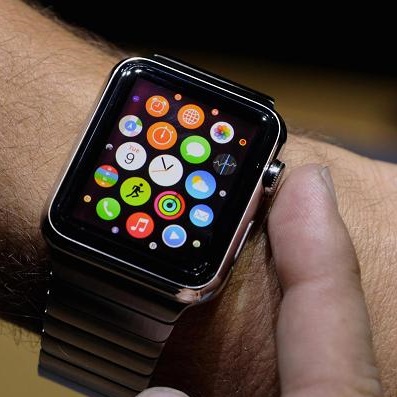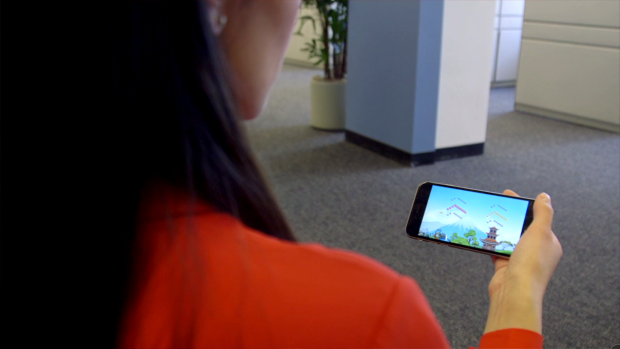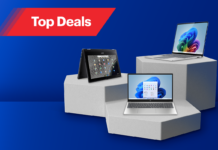 When the first few wearables started to hit the market years ago, I admit that I didn’t take much notice. While the idea of screening calls on a watch harkened back to the first time I saw “Dick Tracy” and I thought the concept itself was neat, I went back into my video gaming bliss and disappeared into whatever I was playing at the time. Soon after, the wearable scene exploded and I had no choice but to take notice!
When the first few wearables started to hit the market years ago, I admit that I didn’t take much notice. While the idea of screening calls on a watch harkened back to the first time I saw “Dick Tracy” and I thought the concept itself was neat, I went back into my video gaming bliss and disappeared into whatever I was playing at the time. Soon after, the wearable scene exploded and I had no choice but to take notice!
These days, I can’t walk more than 50 feet at my office without seeing somebody that has a wearable. Wearable technology is no longer just a pipe dream. It is a reality and here to stay. The game has changed over the past few years though. This blog will take a look at how wearables have evolved and what lays ahead for us in 2016.
Wearables aren’t just about “tracking things” anymore
While many wearable device owners still use them for their basic functions, they do so much more. I still appreciate the step and calorie counting a wearable provides, but truth be told, wearables have so much more practical function to take advantage of. You’re seeing a culture shift now where wearable devices help users assess and solve problems. Take the Microsoft Band 2 as my personal example. Band 2 was influential in helping me understand what my sleep issues were. I had often thought that I wasn’t getting enough sleep at night (with multiple wakeups) and that was contributing to my fatigue the next day at work. I had considered all kinds of sleep training methods for myself but nothing seemed to stick. Within a few days, Band had confirmed that my problem was that I wasn’t getting any deep sleep. In a 7 hour night, I would measure only an average of 90 minutes of deep sleep. I read up a bit more about it, made a few tweaks to my sleep routine (including warming my room a bit more) and I’ve been sleeping much better since. I’ve also become less dependent on caffeine and no longer suffer from withdrawal headaches. I would have never figured any of this out without Band’s help.
I’m sure that my story isn’t unique. Wearables are becoming more than just a personal motivation coach. Take Prana, for example.
Prana is a small disc-sized wearable finishing up its crowdfunding stage and looks to help combat the rigors of stress and improve your day to day life by encouraging better breathing techniques through games and other activities. It’s a unique idea and if something like this interests you, please click here to read all about it before it arrives at Best Buy this summer.

That’s just one example. Wearables can start earlier in life than you think. Last November, I showed you the Monbaby wearable smart button. Designed for young babies who sleep on their backs, Monbaby uses low frequency bluetooth to help monitor some of your baby’s vitals while they sleep and notifies you if he or she stops breathing or rolls over and potentially obstruct their airway. The occurrence of SIDS has been cut in 50% over the past 25 years (which coincides with the recommendations for babies to sleep on their backs) and a wearables like Monbaby have the power to influence and drive those numbers down further.
What’s in store for wearables in 2016?
With wearables taking a more practical approach to aiding your everyday life, expect them to do more of the same this year. If you look at a product like Hexoskin as an innovator, wearable technology will not just be about what goes on your wrist or just around your neck. Here are a few of the things you can expect to see becoming wearable reality in 2016.
- Expect more wearable clothing set on helping monitor your fitness goals. Adidas has long been one of the companies interested in growing the world of wearable/performance hybrid clothing though they don’t appear to have anything with a confirmed release date yet.
- Google’s Life Sciences unit say they’re not far away from contact lenses with glucose monitors in them. You might even see pilot programs for this by the end of the year.
- Fitbit is taking a step forward on their daily capabilities by adding things stress and blood pressure monitoring to what they do. Fitbit also anticipates they hold the key to breaking the current cycle of generic workout recommendations and will be attempting to create personal workout programs based on your needs. You can also expect Fitbit brand smartwatches very shortly. Please stay tuned to Plug In in the coming days for more information on Fitbit’s new products as well as a comparison of their existing ones.

- Finally, wearables with payment options are potentially a thing this year. You will soon be able to lighten your wallet by integrating payment options on your wearable. Security and the safety of your payment information will definitely be a burning question but given that some wearables (like the crowdfunded Blocks smartwatch) have been integrating fingerprint IDs, I’m sure there will be viable solutions before such a product goes to market.
It wouldn’t be far fetched for me to say that 2016 will be the most innovative year for Wearables yet and there is plenty of great tech to go around already. Be sure to stop at Best Buy’s wearables category to see all of the great innovations available right now.
Expect your favourite wearables to get better, faster and offer you much more this year. IDC Canada estimated that around 1.4 million wearables were sold nationwide last year. Were you one of them or will you be one of nearly 2 million forecasted wearable buyers this year? Tell me in the comments below what interests you in a wearable and you’ll be keeping an eye out for.



